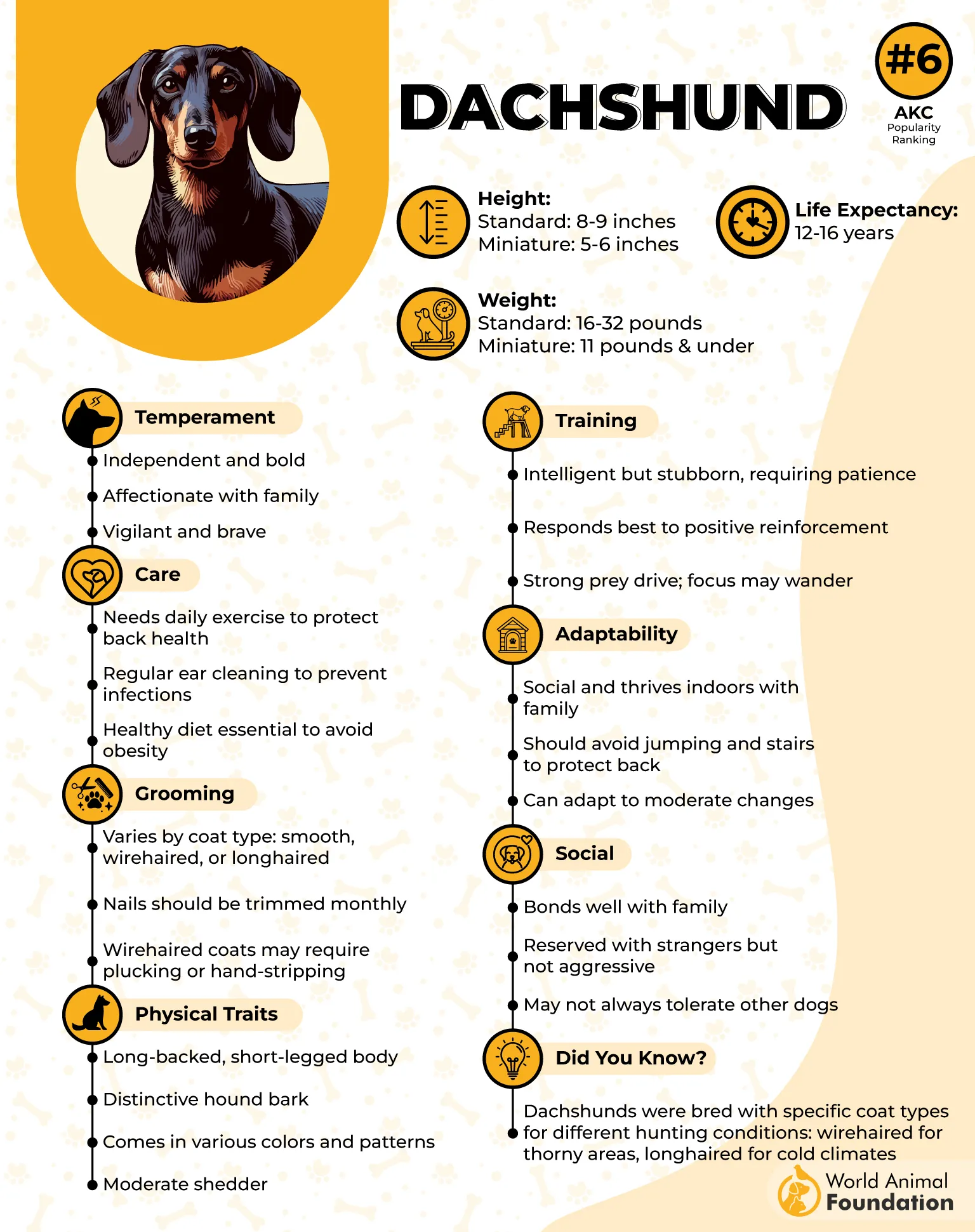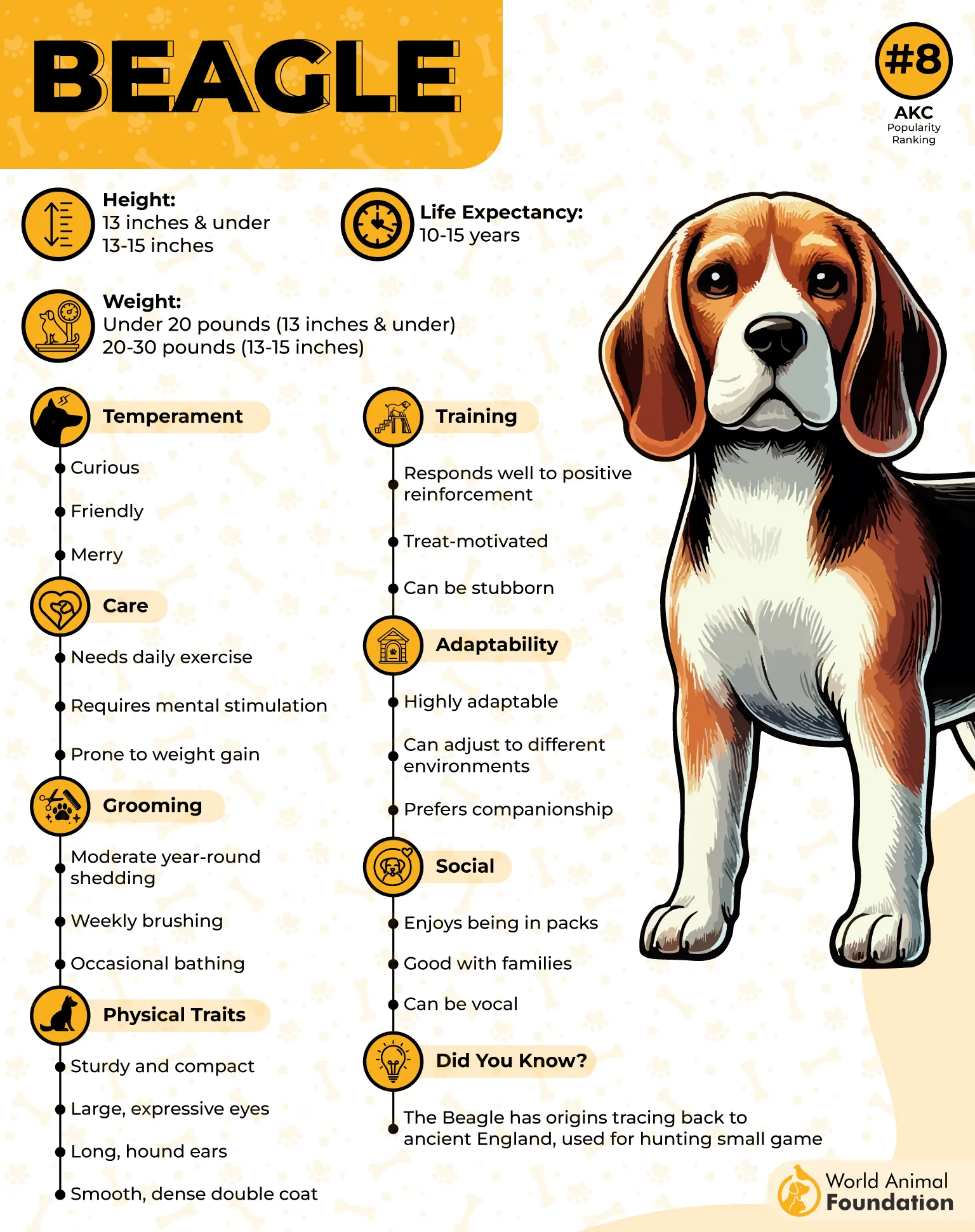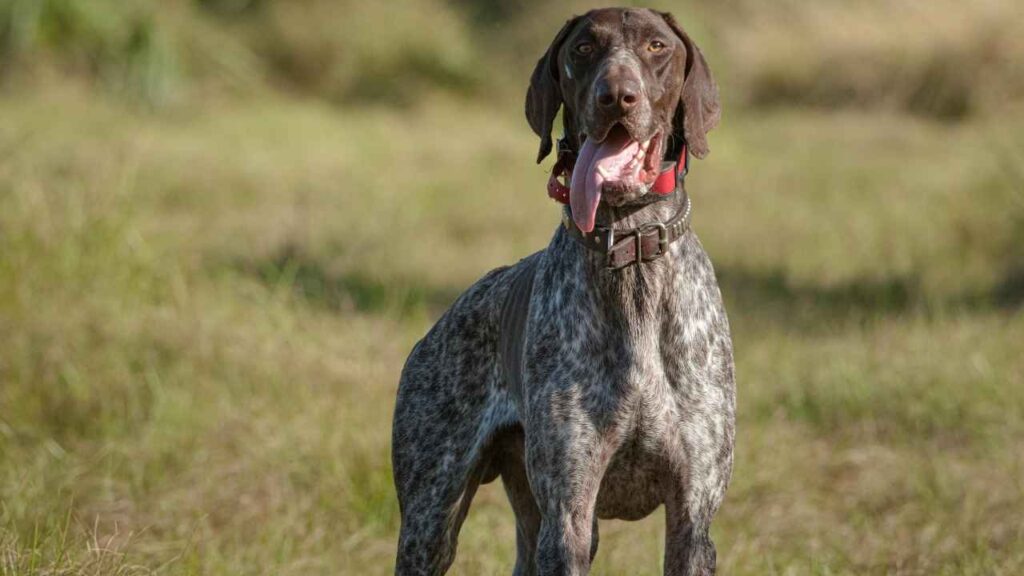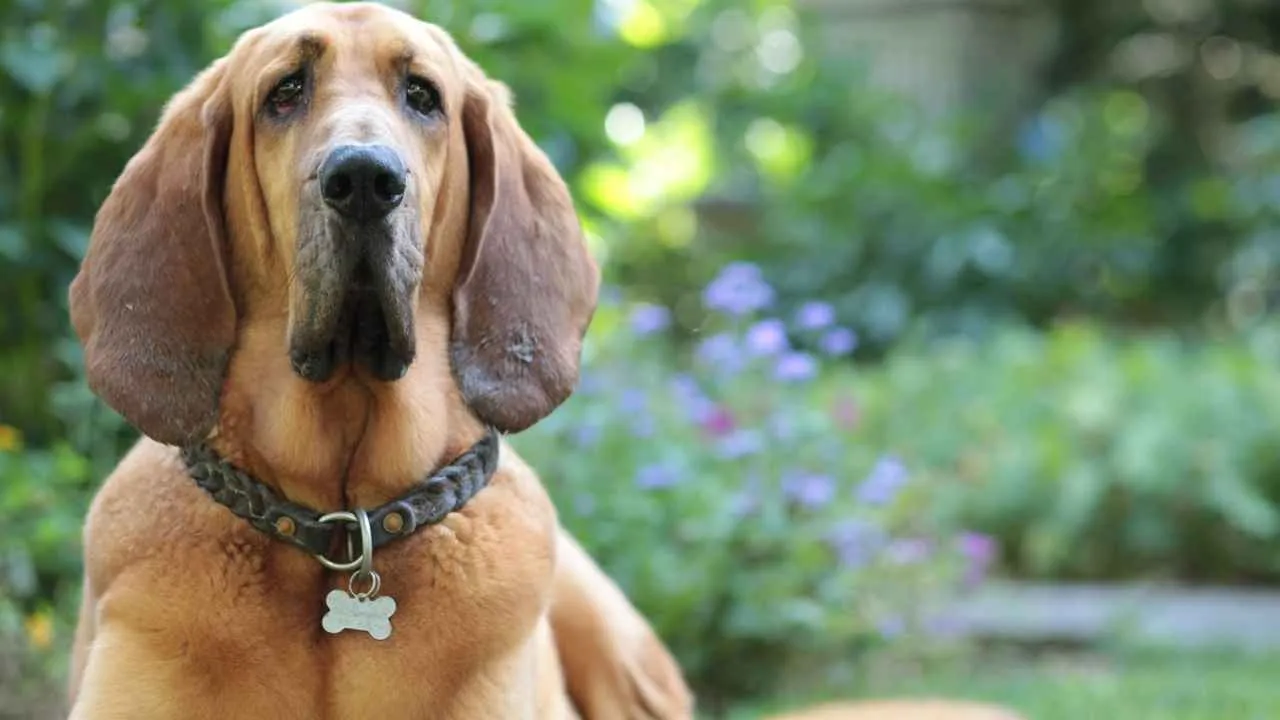According to researchers, a dog’s sense of smell is up to 100,000 times stronger than ours. That means what smells like “warmth” or “flour” to us smells like an entire story to them. Bread baking in the oven? They smell every ingredient—yeast, butter, sugar, even the browning crust.
Some dogs, though, are much better at picking it up than others. It’s not about size or appetite. It’s about how their noses are built. A few breeds are especially tuned in to kitchen smells, and they’ll be by your side the moment the scent changes.
You might not even smell anything yet, but they already do. Their reactions are instant, focused, and honestly… pretty adorable. From curious looks to tail wags and little kitchen visits, some dogs just know when something delicious is on the rise.
In this guide, we’ll explore dog breeds that can smell freshly baked bread long before you do.
Dog Breeds That Smell Fresh Bread Baking Instantly
1. Basset Hound

The Basset Hound’s long ears sweep scent particles from the ground directly toward its nose as it moves. Combined with loose facial skin that traps odor trails, this design creates a focused scent pocket. Their entire structure is built for close-proximity detection.
Olfactory Processing Strength
With over 220 million scent receptors, the Basset has one of the best sense adaptations in the dog world, as highlighted in Zealandia Pets. This allows it to separate scent layers in the air and track specific changes instantly. Even subtle smells like warm yeast rising in fresh bread are easily noticed.

Nose-to-Floor Tracking
Because of their low-slung frame and short legs, their nose remains naturally close to the ground during movement. This consistent proximity keeps the dog tuned to slight shifts in scent density. They can catch lingering aromas before they reach human awareness.
Focused and Uninterrupted
Once the Basset picks up a specific scent, it tends to follow it with extreme focus and minimal distraction. Their methodical nature makes them reliable in detecting consistent smells indoors. The scent of baking flour or butter can anchor their attention easily.
2. Dachshund

Their elongated body and short legs keep their nose low, allowing them to follow faint indoor scents without missing detail. This positioning helps the Dachshund absorb concentrated smells that hover close to floor surfaces. Their focus often locks onto scent trails before people notice them.
Nose Designed for Precision
With over 125 million olfactory receptors, the breed is equipped to detect subtle changes in air particles. That’s a good reason they often rush to the kitchen when something warm is baking. Their sensory system makes even mildly smelling foods stand out dramatically.

History of Scent Reliance
Originally used to track burrowed animals underground, the Dachshund was bred to rely more on smell than sight. Their scent-driven mindset is still intact in modern homes, often seen when a pup circles the same area repeatedly. This shows their scent focus hasn’t faded over time.
Persistent Indoor Detectors
They are known for staying alert indoors and returning to the same spot if a smell lingers. The scent of bread or dough can activate their curiosity long before baking ends. Their persistence makes them reliable indoor scent followers, especially for warm, familiar smells.
3. Beagle

Beagles have over 220 million scent receptors, giving them an incredible advantage in smell detection. Their nose stays low while moving, which sharpens airborne and surface scent recognition. Baking smells like warm bread or cinnamon are picked up quickly indoors.
Scents That Stick
The Beagle is wired to track lingering odors and memorize them for repeated recognition. Even after a scent trail fades, it can identify the signature components of baked ingredients. This level of memory makes them uniquely responsive to recurring kitchen aromas.

Compact but Capable
Despite their small size, Beagles have a strong physical drive to follow scents until they lead somewhere specific. Their curiosity is tied to olfactory input, which makes them alert in homes where cooking happens often. Their persistence turns casual smells into alerts.
Perfect for Families
Because of their gentle nature, the Beagle fits well as a family pet, especially with young children. Their strong sense of smell and playful energy often go hand-in-hand during interactive moments. Their reactions to new scents can also spark attention from kids.
4. Labrador Retriever

Labs possess an impressive count of scent receptors, enabling them to notice subtle, layered smells in both indoor and outdoor environments. Their nose adapts well to changes in air temperature and humidity. That makes them capable of catching shifting smells like warm bread baking.
Airborne Scent Accuracy
These dogs often sniff upward or hold their head slightly raised to gather information from the air. The ability to interpret airborne molecules quickly makes them ideal for detecting faint aromas indoors. A freshly rising dough scent can trigger their attention instantly.
Human-Synchronized Sensitivity
Labs have a close bond with human activity and are quick to associate smells with routines in the home. Their response to kitchen scents is often immediate, with head tilts or following behavior. They tune into aromatic cues without needing vocal prompts.
Scent Retention Over Time
Even after a smell fades for humans, Labs can retain memory of the scent for longer periods. Their olfactory recall allows them to recognize when a familiar smell returns later. Baking odors that linger in fabrics or corners are still noticeable to them.
5. German Shepherd

German Shepherds are known for associating scents with specific actions or moments and recalling them with precision. The smell of baking triggers curiosity, especially in those trained for search or detection. This sensitivity comes from years of selective breeding for alertness and response.
High Receptor Count
With nearly 225 million scent receptors, the breed has been extensively used in narcotics, explosives, and missing person detection. Its ability to detect subtle shifts in temperature-based smells, like fresh bread rising, falls well within its olfactory range.
Sensory Prioritization
This breed uses scent to process its environment before sight or sound. Its ability to detect airborne molecules from across rooms makes it attentive to smell-based changes in the home. Whether it’s butter, crust, or dough, it recognizes each stage.
Mental Engagement Through Scent
German Shepherds seek stimulation, and a new scent often becomes a point of focus. Warm, rich smells tend to hold their attention longer than neutral household odors. Their working dog background reinforces their instinct to interpret such cues.
6. English Springer Spaniel

These dogs were bred to detect and flush out game, which required fast scent recognition in changing outdoor conditions. Their soft noses stay active indoors too, especially with warm food aromas. A fresh baking scent activates their scent focus almost instantly.
Detail-Oriented Sniffing
The breed is skilled at picking apart complex scent trails and identifying individual components. They don’t just notice one smell but analyze overlapping layers in a single whiff. This helps them pinpoint the subtle stages of bread dough as it rises and bakes.
Scenting on the Move
Springers are known for their quick, sweeping movements while tracking a scent indoors or out. Their active energy keeps their nose in motion, allowing for scent intake at multiple points. This constant movement helps them pick up changes in the room fast.
Indoor Sensory Engagement
These dogs are mentally wired to investigate household scents, especially food-based ones. Their curiosity makes them more reactive to baking smells that gradually fill the air. They often head straight toward the kitchen the moment the scent profile shifts.
7. German Shorthaired Pointer

GSP processes airborne odors rapidly, aided by high energy and quick movement. The open nostrils and elongated muzzle help filter scent variations even during motion. This makes them responsive to light smells such as warm bread rising in a nearby room.
High-Endurance Sniffing
Their scenting ability doesn’t fade during extended activity due to their physical stamina and sharp sensory memory. They continue to track without losing accuracy over time. This keeps them alert to ongoing smells like butter, yeast, or browning crusts in kitchens.
Indoor Scent Sensitivity
Even in non-hunting environments, their ability to notice new household smells is well-documented. They can distinguish between different food scents and follow trails toward sources. Their alert posture often changes immediately when baking begins.
Active and Purposeful Behavior
They often pace or patrol indoor spaces as part of their natural routine, increasing their contact with air currents. This frequent movement exposes them to subtle smell shifts faster than sedentary breeds. Their reaction can be immediate when a scent catches their attention.
8. Bloodhound

The Bloodhound has around 300 million scent receptors, the highest among all dog breeds, as Zealandia Pets describes. Its olfactory system is capable of recognizing and separating smell particles in dense environments. Even faint kitchen scents like baking sugar or flour don’t escape its notice.
Nose-Focused Movement
This breed moves with its nose practically touching the surface, maintaining close contact with scent sources. Its low posture and trailing head posture ensure it stays in continuous detection mode. Scents rising from a warm oven become instantly noticeable within its range.
Persistence in Tracking
Once the Bloodhound picks up an odor, it is known to track it with hours-long concentration. Its ability to follow a single scent for miles highlights how refined its sensitivity is. The smell of baking bread can linger in its awareness long after it’s gone.
Facial Structure Built for Scent
Loose skin around the face and deep folds help trap scent particles while the dog is working. Long ears channel air toward the nostrils, intensifying aroma detection indoors. This structural design maximizes the time a scent remains accessible to the dog’s nose.
9. Belgian Malinois

Belgian Malinois have a refined olfactory system capable of detecting complex odors even in layered environments. Their noses can pinpoint chemical changes in the air with impressive speed. This heightened sensitivity allows them to detect warm, rising scents like baking bread.
Driven by Focus and Training
Known for their precise focus, they respond quickly to unfamiliar or changing smells in controlled settings. Their eagerness to engage with scent-based tasks makes them ideal for identifying airborne cues indoors. This includes subtle shifts in aroma from ovens and rising dough.
Fast Scent Lock-On
These dogs can quickly lock onto a scent source and trace it to the exact location within seconds. Their efficiency comes from a combination of muscle control, trained reflexes, and mental engagement. Indoor scents, such as bread baking in real-time, rarely escape their attention.
Natural Alertness Indoors
Their alert behavior does not rely on external commands when they’re tuned into something new in the environment. Movement around kitchens or sudden scent shifts trigger automatic responses. The breed’s instincts often lead them toward areas of scent concentration with a purpose.
Conclusion
Some dogs are just built to notice what the rest of us miss. While we wait for the scent to rise, they’ve already found it. From crust to butter to browning dough, they pick up what’s coming before it fully arrives.
These scent-driven breeds can also help notice changes around the home. Handlers often rely on their noses in professional work, but at home, it’s just another way they bring life to slow days. Their instincts keep things interesting, and their reactions are safe, easy to manage, and full of charm.
So next time you bake, check who’s already sitting by the oven; they probably got there first.


